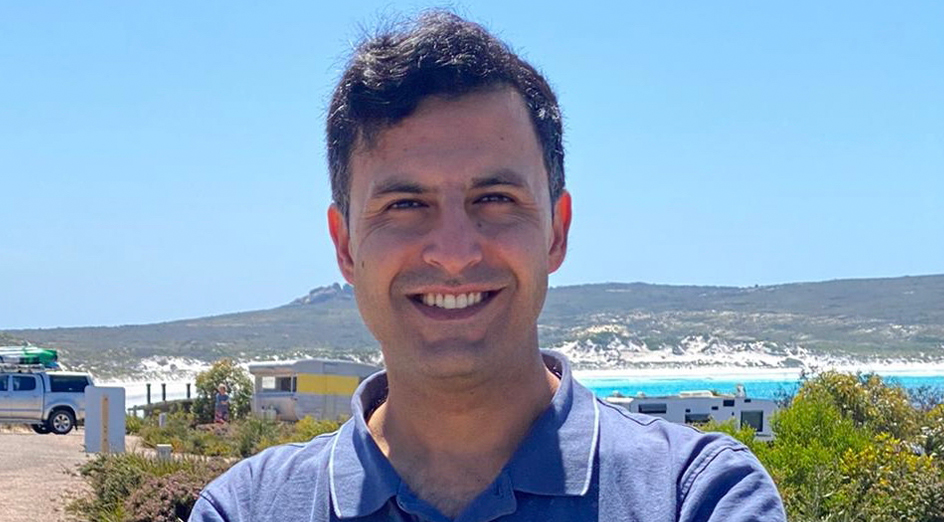Adil Khan has not seen The Martian. But his work is helping to ensure that when human beings do reach Mars, they will have a better time of it than Matt Damon’s Mark Watney.
Dr Khan is a research associate in the ARC Centre of Excellence in Plants for Space and the Centre for Plant Energy Biology in UWA’s School of Molecular Sciences.
“You have to be creative in your thinking. You need to go beyond the box.”
-Dr Adil Khan, UWA
Among the challenges his work confronts is the capacity of earthly visitors to other planets to survive on food they can produce for themselves. If we can achieve that, settlement is a possibility. Our nearest and best prospect is indeed Mars.


Adil came from a farming family in a small village in north-western Pakistan. The University of Agriculture Peshawar, about 40km away, changed his life. His imagination was fired and the range of his life possibilities enlarged by scholars who were encouraging and enthusiastic.
He learnt that a university could change your life, and that scientists could do “something for humanity”. The daily commute between his village and the university brought together the worlds of theoretical exploration and practical application, each making sense of the other and broadening his understanding.
It was in Peshawar that Adil was introduced to the fascinating possibility of engineering plants. To many that might seem a dangerous, even daunting prospect. Could we? Should we? Regardless, human beings have been “interfering” with plants for a long time: making them more useful to us, or simply more decorative.
Perhaps, Adil reasoned, since we can make plants prettier and tastier, we can do even more. Perhaps we can make them more adaptable; able to survive and thrive without fertilisers and pesticides in the difficult environments wrought by drought, pestilence and salinity.


Dr Adil Khan, whose focus is on inventing gene circuits in plants.
In search of the facilities that would enable him to do more advanced work, Adil set his sights on a cricket-mad land like Pakistan: Australia. In 2012 he began a Master’s degree at the Australian National University, then completed his PhD at The University of Western Australia under the supervision of Professor Ryan Lister, with whom he now works as a post-doctoral fellow.
Adil’s doctorate was focussed on inventing gene circuits (based on DNA) that he connects to our understanding of electrical circuits. Rather than making a permanent alteration to the activity of a gene, his research asked whether a plant can be deliberately programmed to “switch on” a gene that confers resistance to certain pathologies or conditions – for example, when flies attack, or the heat is high, or water is in short supply?
Further, can genetic programs be written that ensure particular genes are “on” only precisely when and where they are needed? The answer was yes. The gene circuits Adil and his colleagues developed achieved successful implementation with the model plant Arabidopsis.
The next step is to move them to useful applications in crops. It hasn’t been an easy process to create this new technology from scratch. Adil said there were inevitable frustrations when something that should have worked simply did not. “You have to be creative in your thinking,” he said. “You need to go beyond the box.”
Words by Margaret Lindley







































